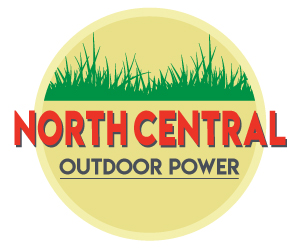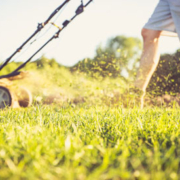July is here. Even in high elevation and northern locations — where we’ve just set out plants and are seeing germination from the previous weeks’ seed sowing — we’ve already mowed our lawns a handful of times. In earlier zones, we’ve been mowing for months. No matter where we live, it’s time to review some lawn mowing tips and tricks.
How is summer mowing different than spring mowing? It’s less frequent. As spring moisture conditions give way to the dryness of summer, lawns grow less quickly. Higher temperatures also encourage faster moisture evaporation. The most important thing you can do at this time of year is to encourage moisture retention. The best way to do it? Set your mower to cut less grass. Generally, three-and-a-half, even four inches is a good height for the most common grasses (Bermuda, zoysia and other warm-climate grasses can be cut shorter). This is the highest setting on most mowers. Carrying a yardstick around your lawn and measuring different places — shaded and not, northern exposure and southern exposure — will give you a good idea of how your grass is faring (and bring a kid-friendly pun to the common usage of the word “yardstick”). Longer grasses in your yard help shade the ground, thus lessening moisture evaporation. Shading the ground also discourages weed seed from germinating. Different types of grasses require different mowing heights.
Another general rule: don’t cut more than a third of the grass’ height. If you’ve been away on vacation or otherwise have not been able to mow, don’t immediately trim your lawn down to three-and-half inches. Grass needs length to generate the energy it requires and produce chlorophyll. Removing a large part of this generating surface may cause your lawn to brown prematurely. If your lawn is overgrown, cut it in stages.
Many lawn experts recommend you mow in the early morning or early evening to avoid placing stress on your grass while protecting the person pushing the mower from heat-related problems. Mow with a sharp blade. Dull, nicked blades cut grass unevenly and damage its ends leaving an entry point for disease and extra surface for evaporation. Finally, do you leave your clippings on the lawn or collect them? Organic gardeners know clippings are a good source of nitrogen for your grass. Regular mowing leaves clippings of just the right size to settle into your turf, inhibiting evaporation and eventually breaking down into the soil. Unless your clippings are long and thick enough to shade your grasses, let them return to the soil from which they came. In the organic garden, everything is part of a cycle.



